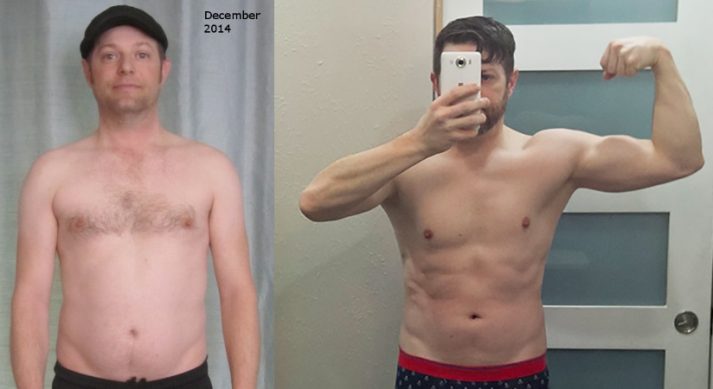
Heart disease prevention is best achieved by eating a healthy diet and engaging in regular exercise. Most women don't put their heart care on their to-do list. It's a huge mistake to assume that pills will stop heart disease progression. Research has shown that lifestyle changes can significantly reduce your risk of developing coronary disease. These are some of the ways you can improve your heart health, and help prevent heart disease.
Reduce your risk factors by identifying them. Your risk of developing heart diseases is directly related to your gender, age and genetics. It is important you know that heart disease can be experienced by men and women in different ways. This is why it is important to learn about the risks for each. There are several lifestyle changes that can be made to lower your risk of developing this disease. But how can you determine which ones are right for you?

A heart healthy diet is a good place to start. Consume plant-based and lean proteins. You can also eat whole grains and nuts. This will maintain a healthy heart and reduce your chances of developing heart diseases. Maintaining a healthy heart is crucial for controlling blood pressure and preventing strokes. It is important to make small adjustments to your daily routine. A few small changes can make a big difference in improving your heart health and decreasing your chance of developing heart disease.
Taking measures to prevent cardiovascular disease can help you stay healthy and lower your risk of a heart attack. It is possible to reduce the risk of heart attacks by making lifestyle changes such as changing your diet and exercising. By improving your lifestyle, you can reduce your risk of developing cardiovascular disease. In addition to your diet, you should also increase your physical activity to stay in shape. This will reduce the chance of you getting this condition. Healthy habits can help improve your overall health.
You should exercise regularly, in addition to eating a healthy meal. Being healthy can reduce your risk of developing cardiovascular disease. Being active can prevent you from developing heart disease. It is important to be active. You can also do some exercise if your schedule is not conducive to exercising. It is best to find a new hobby and exercise. By doing this, you can get in shape and reduce the risk of cardiovascular diseases.

If you have multiple risk factors for cardiovascular disease, it is a good idea to get checked. It is possible to have your body mass and waist circumference measured by a blood test. Also, make sure you have your cholesterol levels checked in order to verify that your blood pressure is within the normal range. Smoking, alcohol intake, and tobacco use should be avoided. Staying healthy will mean you are more active. If you take steps to reduce your risk factors, you'll be less likely than others to develop heart problems.
FAQ
Egg is good for men?
The egg is rich in all nutrients needed by the human body. It is also good for maintaining strong bones, healthy heart and lungs, as well as stable blood pressure.
Eggs are rich in protein, vitamin A, B12 and D,E,K, as well as vitamins A,B12 and D,E,K, calcium, iron, phosphorus, manganese, copper, magnesium, and riboflavin.
The egg yolk has high cholesterol. However, it doesn't contain saturated fat. Eggs contain less saturated fat than most other foods.
In addition, they are low in sodium and calories. They are very versatile and can be cooked any way you'd like. They can be fried, poached, scrambled, boiled, hard-boil and baked.
They are very nutritious and easy-to-prepare.
You should eat at least two whole eggs per day. You should eat eggs if you are allergic to them.
Our bodies need eggs to provide the essential nutrients they require. Include eggs in your daily diet.
How often should you exercise per week?
It depends on how much time you have available and what type of exercise you prefer. It's a good idea to do moderate-intensity aerobic exercises 3 - 5 times per week. It's important that you don't overdo it. Consistent exercise is essential to achieving maximum benefit from your workouts.
Which exercises are best for me?
It all depends on your fitness goals. Some people choose to focus on endurance activities, such as swimming, cycling, and running. Others like lifting weights or using resistance band. There are many options for exercise today. Select the one that best suits your needs.
What is a good 7-day workout schedule?
Three days per week should be spent on cardiovascular training, including running, biking, swimming, and two strength exercises using free weights, weight machine, as well as one flexibility/core exercise such as yoga, Pilates. It's essential to do each activity at least once a week. Each session should not take more than 45 mins.
Cardiovascular Exercises: Running, biking, swimming
You should aim to get at least 60 mins of cardio exercise per week. Aim for 75 minutes per week to get the best results. Cardio exercise can improve blood flow and stimulate muscle development.
Strength Training
While cardio exercises target the heart and lungs, strength training targets the muscles and bones. Strength training can help you burn calories even when you're not working out.
Flexibility & Core Workouts
Core and flexibility exercises are great ways of strengthening your whole body. Both yoga and Pilates are excellent options.
Statistics
- According to the American Academy of Dermatology (AAD), men over 50 are at a heightened risk of developing it. (healthline.com)
- Candidates and applicants must pass all four tests at 70% (minimum level) to graduate from Basic Deputy U.S. Marshal (BDUSM) Training. (usmarshals.gov)
- 10 pounds in a month is likely during a lean bulking phase, especially for beginners. (muscleandstrength.com)
- An estimated calorie range for moderately active adult males falls between 2,200 to 2,800 calories per day, depending on age. (eatright.org)
- By John Thompson Take a whopping 38% off a set of PowerBlock Pros. (menshealth.com)
External Links
How To
How does a man become fit in just 30 days?
It is best to break down difficult goals in small, manageable steps.
You need to make sure you are working towards the goal each day. This could be as simple as doing 10 pushups and running for 3km.
You will notice positive results if this is done consistently over time.
The key thing here is consistency. You must keep going until you succeed.
What is the difference between Aerobic Fitness (or Anaerobic Fitness)?
Anaerobic fitness refers to the ability of our bodies to perform intense physical work without oxygen. Anaerobic pathways are used when there is intense exercise to provide sufficient energy. Anaerobic pathways are glycolysis, creatinephosphate and the phosphagen.
Cardio fitness is, in contrast to aerobic fitness, the practice of sustaining low-intensity exercise. When doing aerobic exercises, oxygen serves as the primary source for fuel for the cells. In other words: The aerobic pathway gives more energy than that of the anaerobic.
If you are looking to run a full marathon, then you have to increase your aerobic ability. If you only focus on building up your anaerobic capacity, you won't be able to finish the race.
Aerobic fitness also refers to cardiovascular fitness. Step tests and VO2 max testing are the most popular methods to measure cardiovascular fitness.
VO2 Max Test
VO2 max refers to the maximum amount of oxygen (O2) used by the body during exercise. This test measures how much oxygen the body can use while exercising.
This is the best test to assess cardiovascular fitness. However, the test can only be administered by highly trained professionals and requires expensive equipment.
Step Tests
Step tests are a simple but effective way to measure cardiovascular fitness. They involve walking or jogging on a treadmill or track for a certain duration based on your age and weight.
These tests are simple to perform, cost-effective, and easily accessible from almost any location. You can, for example, walk for 2 minutes on a treadmill, then rest for 1 min, then repeat the process for 20 minutes. Then, stop. You should maintain a constant heart rate throughout the session.
This method is called the Bruce Protocol. Bruce himself was a runner who developed this protocol after he realized that his heart rate would not increase when he ran longer distances.